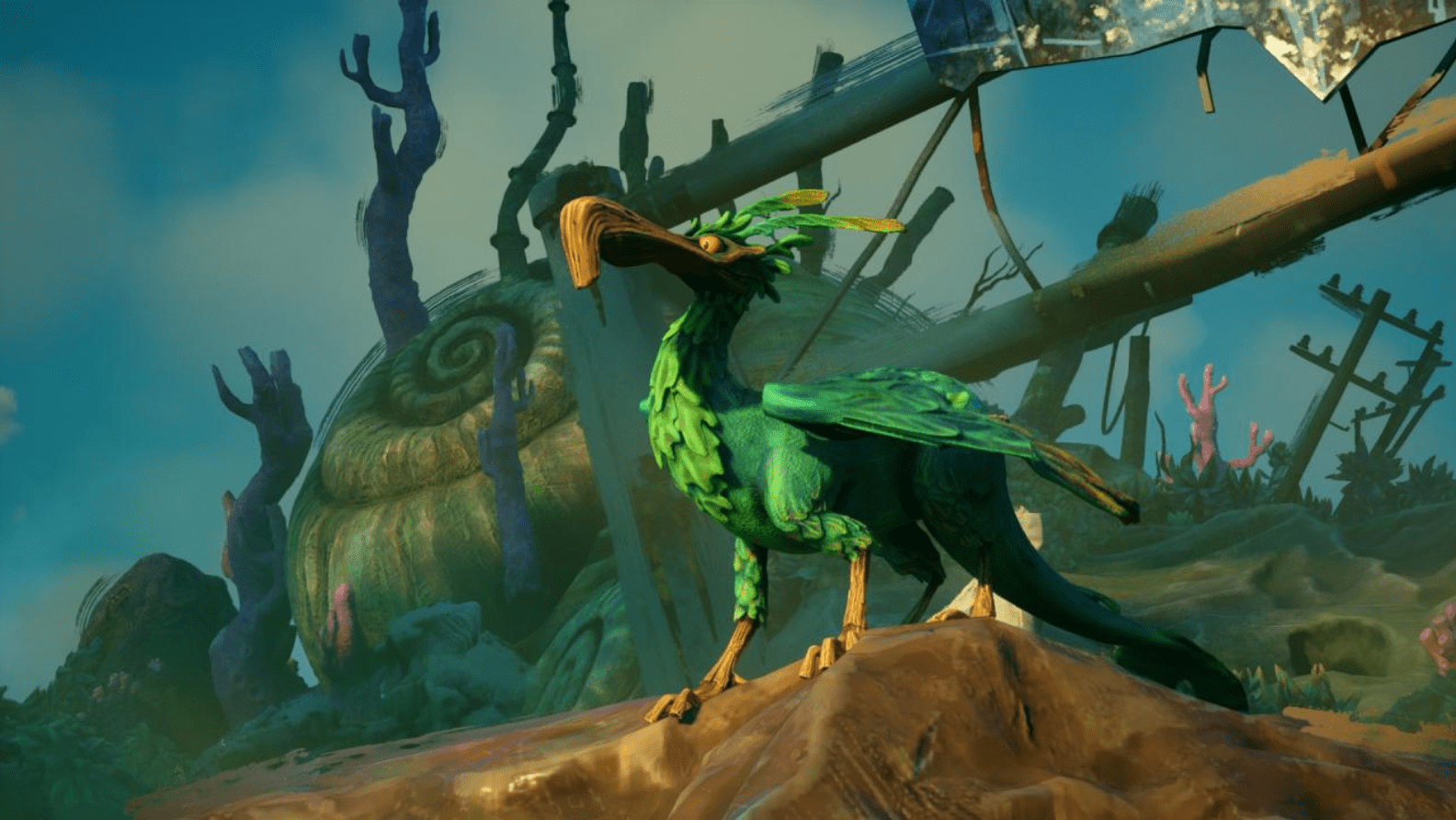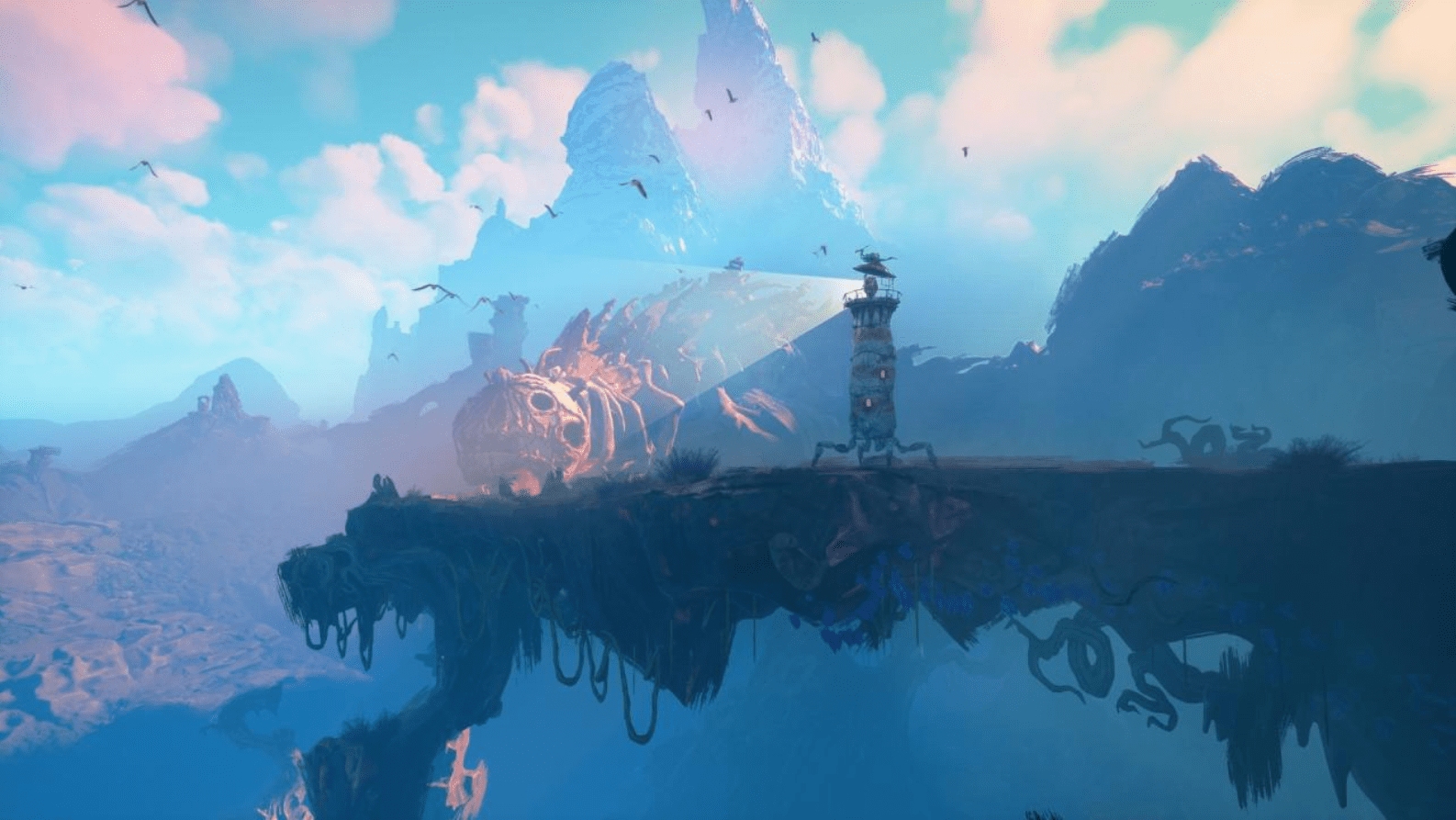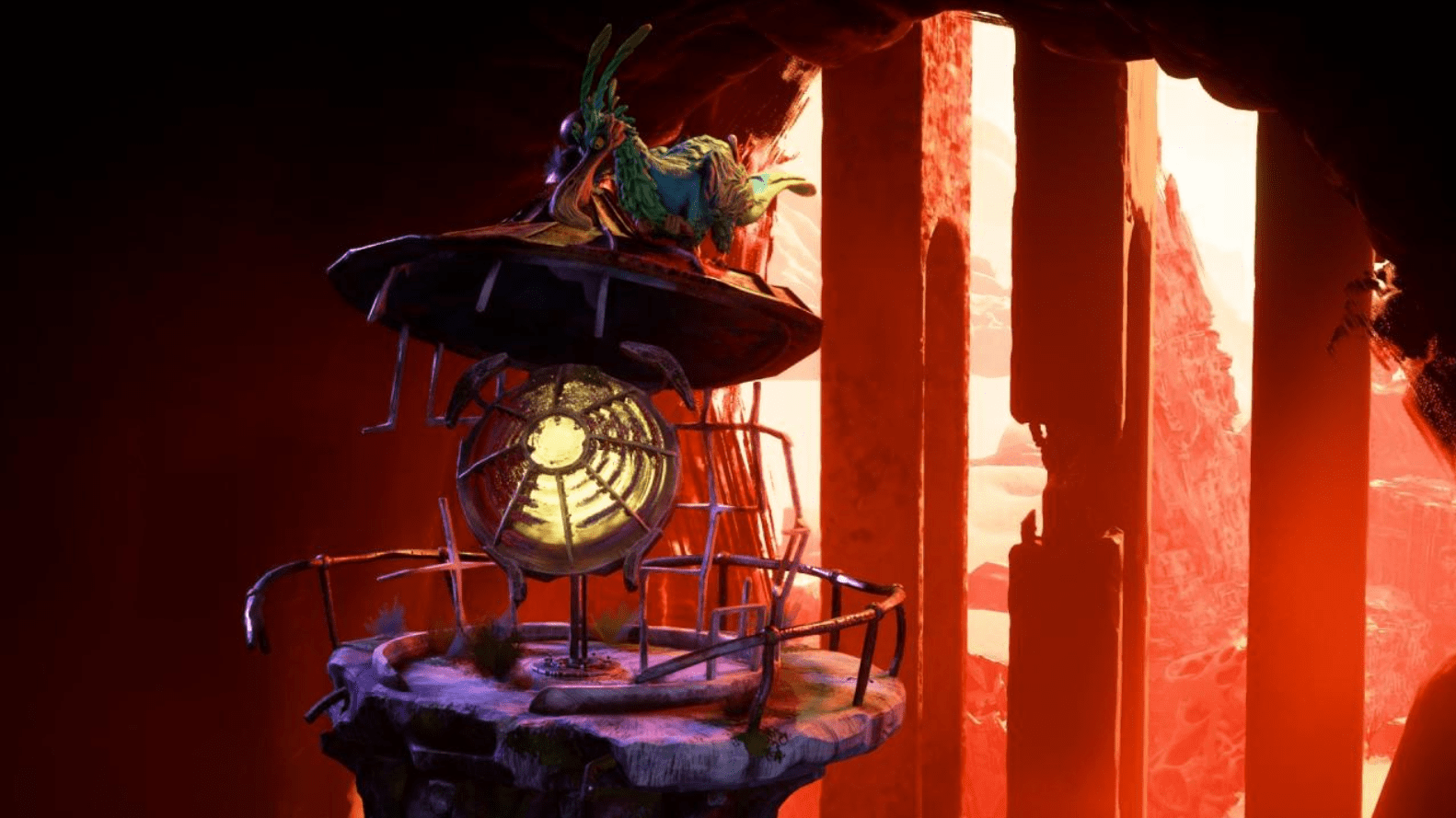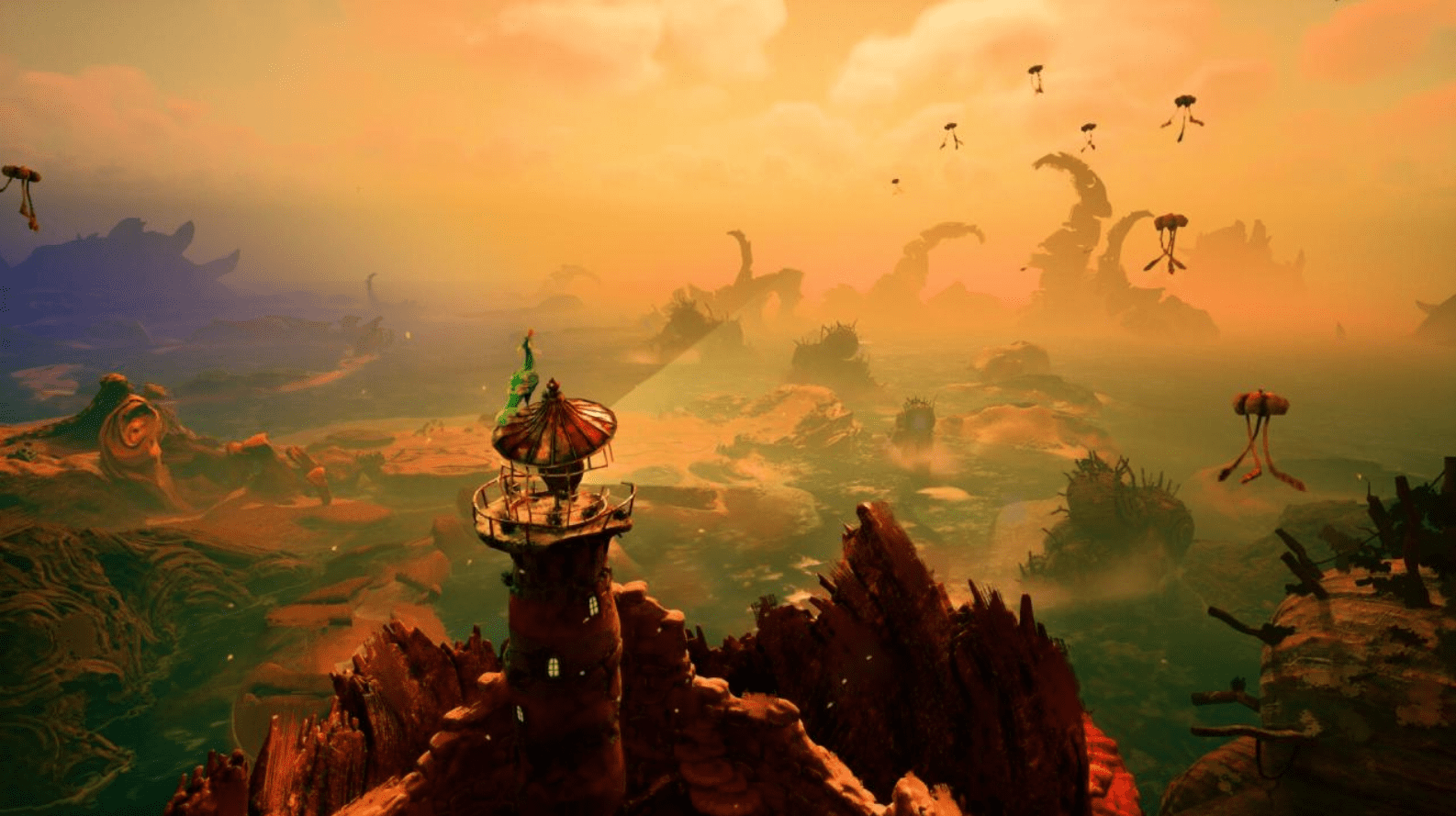Double Fine Productions stands out as one of those game studios that truly leans into odd ideas and honest feelings. Their titles always blend humor with heartache, from the wild fantasy in Psychonauts to the touching vibe of Broken Age. But Keeper pushes things further into real depth: a quiet, silent tale of bonds, endings, and light creeping back into a lost world.
Lee Petty led the work on Keeper. It pulls together Double Fine’s long love for stories told through pictures. Petty earned his rep with creative visuals in Headlander and Rad. The game came out on October 17, 2025, through Xbox Game Studios. You could jump in on Game Pass right away. It grabbed attention fast with its odd setup: a lighthouse stirs after a storm and sets off across a fading island with a single seabird.

The whole setup feels like a dream you just woke from.
Keeper skips words or hints to share its story. No maps or voices guide your next move. It pulls you in to sense things, not figure them out. Still, the glow of the beam, the shift of metal parts, and the seabird’s lonely calls build something close and timeless, weird yet totally human.
It starts calmly. A fierce storm pounds the shore. Waves slam into empty rocks on a deserted island. A tiny seabird, tired and shaken, smacks into a rusty old lighthouse and drops. Something stirs inside. Metal creaks. Gears turn rough. Then light bursts out. A strong ray slices the storm, chasing shadows. The tower lives.
But that glow cracks its foundation. With a wobbly groan, the structure yanks free from the rocks. It bends its body into metal arms. The lighthouse lumbers off, slow and clumsy. The bird hops onto the top, nervous but sticking close. They head out together.
From that point, Keeper turns into a quiet trek across wild areas. Each spot marks a slow fade. You wander coral flats, empty fishing villages overgrown with shells, and glowing woods where light pulses like it’s alive. Every place shares bits of the old folks who called it home, and how they let their lives slip away through neglect.

What hits hard is how Keeper shares emotions without talking. The link between the bird and the tower is built purely through movement. The bird darts ahead sometimes, calling out like it’s urging you on. In rough weather, it curls up tight under your glow for safety. You read the lighthouse’s thoughts in how it swings its light toward the bird or pauses by ruined homes, like it recalls the paths it once brightened.
A soft sorrow lingers over it all, like quiet regret. The lighthouse seems like a failed protector, now seeking to fix its past. The path grows riskier as you go, and the light dims bit by bit. Maybe it’s just time passing. Or a sign of deeper loss. Keeper leaves it open.
Keeper plays as an exploration adventure. It draws from titles like Journey, Abzû, and Inside. Those push smooth flow, though. Keeper goes for stumbles on purpose. The lighthouse shuffles with long, crab-style legs that trip and topple.
That clumsiness bugs you at first. Then it clicks into the mood. You’re not steering a slick hero. You’re guiding an ancient thing, rusty from ages of sleep, figuring out steps.
I remember my first playthrough. I laughed when it face-planted into the sand. By hour two, every wobble felt real. Like helping my grandpa learn his walker after hip surgery. Small wins. Real effort.
Each tumble turns into progress. Every steady stride feels like pure grit.

Your key tool is the light ray. Shine it to reveal trails, push back dark shapes, or stir hidden machines. Some spots need you to aim at mirrors or crystals that bounce light far off. Others spark life, like flowers that open in your glow or metal vines that stir in the warmth.
Your bird buddy helps too. Tap a button to send it for distant levers, lost bits, or to draw off threats. Later, it picks up tricks, like slipping through tight gaps or summoning ghost lights to uncover hidden spots.
Keeper’s flow stands out with its heart-led rhythm. No rush. It invites you to linger, poke around, just soak it in. Puzzles aren’t roadblocks. They are pauses to notice and hear your world.
No fights here. Skip health bars, swords, or kills. The struggle stays in your head more than your hands. It’s holding light steady against dark.
Darkness creeps like thick oil over the ground. It hums low in the quiet. Your ray holds it off, but overdo it and your power dips. The game nudges care gently: too much shine and it sputters. Ignore storm clouds, and they swell. It’s a back and forth, a picture of steady watch.
Puzzles build up smart. Early ones teach light trails. Later, they mix in teamwork with your bird. In one killer moment, sync your beam to the bird’s calls. It wakes a buried ruin, notes echoing through rock and waves.
Old light pipes pop up often. Giant setups that carry your glow across fields. Aligning them feels grand, almost sacred. Beams fire skyward, restoring island shine. Not just solves. It’s healing.
Keeper looks stunning. Rare game where every view feels hand-drawn. Art mixes soft brush strokes with sharp machine bits, blending real and dream.
Each zone pops differently. Lavender skies make Coral Plains gleam like gems. Forgotten Shipyards, with cranes tangled in weeds, scream decay. Glass Caves steal the show. Your light splits into rainbows, turning walks into light dances.
The lighthouse shines as pure design. Machine yet alive. Joints strain under load. Beam sweeps like an eager gaze. Watching it steadily feels oddly alive. Animation breathes soul into metal, proving how far it carries tales.
Camera work nails it. Fixed angles, stress scale, and alone time. Pull back to see the lighthouse cross vast skies. Hits you how small and solo it is.
Sound design anchors the heart. No talk, but every noise counts. A living pulse from your beam’s hum, leg creaks, distant sea roar.
Clara Dalen scored it. She studied under Austin Wintory. Her work mixes full orchestra sadness with bare ambient tones. Strings rise softly in the wind. Choirs fade like old thoughts. Lumen Vitae, the core track, hits during renewals. Sticks in your head post-credits.

Silence works magic too. Some spots go dead quiet. Just rocks tumble and bird peeps. Builds tension so the music lands with huge, pure emotion.
Tech-wise, Keeper runs solid. Locks 60 frames at 4K on Xbox Series X or decent PC. No ugly loads. Biome shifts blend seamlessly.
Minor glitches. Physics glitch on bumpy land sometimes. Fixed cameras disorient brief.
Small stuff. Overall smooth. Bright style shines even in low gear.
Accessibility rocks. Tweak blur, boost dark contrast, soften beam flashes. Shows Double Fine gets inclusion.
I played on my old Series S. That bird chirps during storms? Broke me. Reminded me of my dog’s last winter, huddling close in thunder. Keeper nailed that raw pull.
Keeper goes beyond indie try. It’s a thing of being. What holds when all fades. Lighthouse and bird’s path mirror our hunt for purpose amid the mess.
Most games chase thrills. Keeper dares to murmur. Tune into waves, breeze, life’s soft return. Too slow or fuzzy for some. But if you match its pace, it’s a tale in steps and glow, not chatter.
Its quirks, the deliberate trips and hush, spark life. Every stride earned. Each beam is hopeful. Double Fine crafted a living poem. Gentle nod that beauty endures amid ruin.
Short. Real. Keeper lingers.












